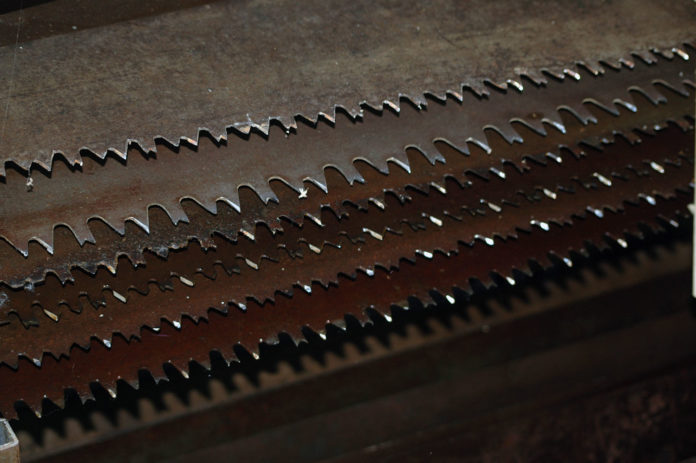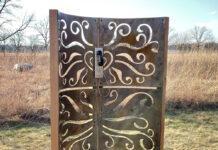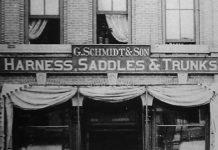Visitors, including many children, attend Historyfest every summer on the McGowan farm in South Bend Township.
They experience the sights, smells and sounds of past times on land that used to be home to 100 sheep, 20 hogs and 50 chickens, according to owner Jack McGowan. Even geese and turkeys waddled along the land near the Blue Earth River before the farm took a step back in time 27 years ago. Livestock was replaced by a blacksmith’s forge, a trebuchet and other equipment and weapons from bygone times.
With the exception of last year’s recess for COVID-19, for 26 years costumed participants have portrayed characters from the past — a temperance lady, a famous president, numerous tradesmen, and other characters who bring the past to life. They entertain and educate hundreds of visitors about skills as varied as blacksmithing and hawking. It’s all a result of 82-year-old McGowan’s “can do” approach to life.
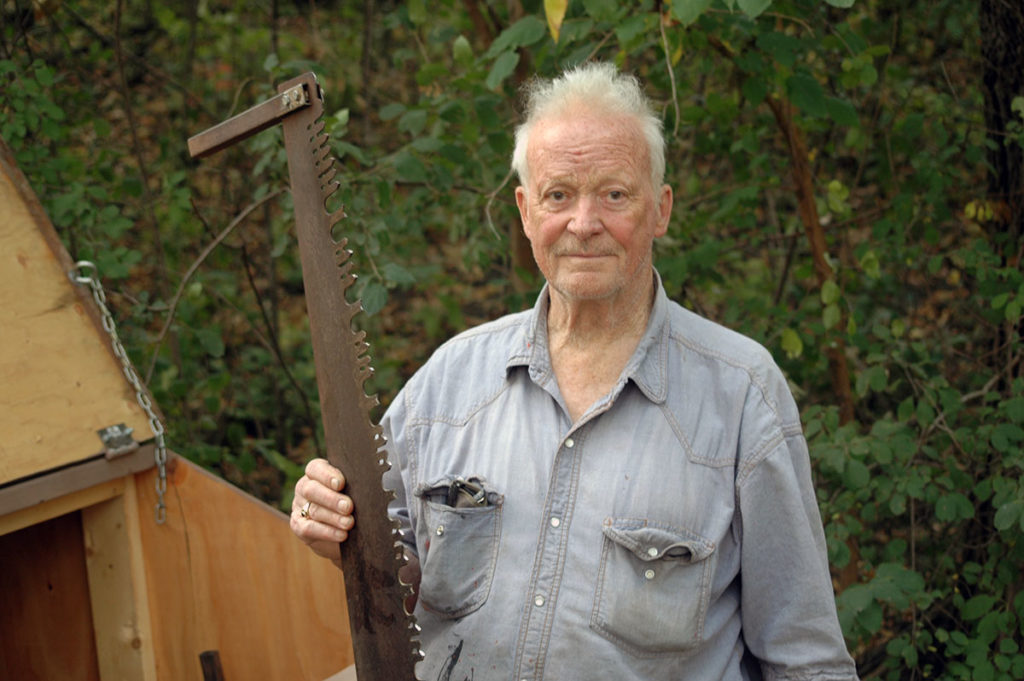
McGowan, who grew up in Mankato, was 19 years old when he took over the family’s bottled water business after his father had a stroke. It was McGowan’s occupation until he sold the business 10 years ago.
While becoming immersed in business, he lived for five years in an old log cabin near his current property before marrying his wife, Diann. In keeping with an interest in the past, the couple built their 28’x42’ three-bedroom home from native lumber, with a four-foot fireplace in the middle of the house.
History of Historyfest
The idea for Historyfest began one spring when teachers at Franklin School in Mankato wanted to hold a Renaissance festival.
McGowan explained, “I let them use the property and helped them put on the festival. The teachers were the re-enactors. Also, Diann and I had eight kids, and that starts you doing things.” By then, McGowan had been involved in the Bend of the River parade for 10 years, including as the parade chairman, so organizing an event wasn’t a new experience for him.
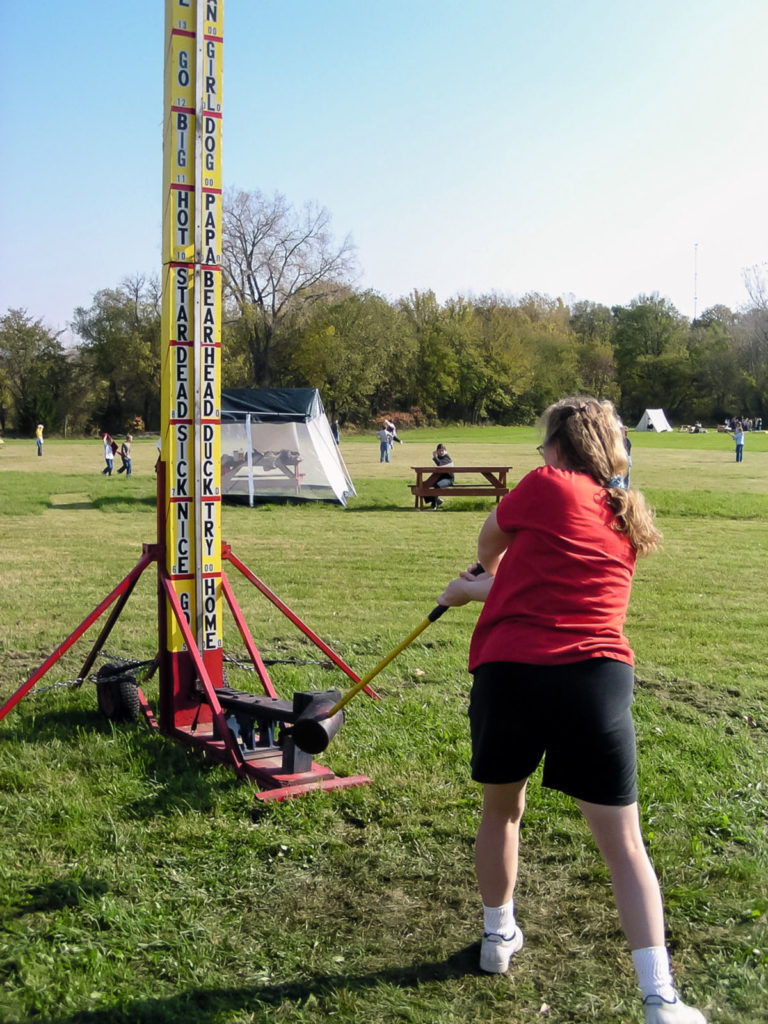
“I got equipment and told people to come,” McGowan said. “I knew who had what. I invited weavers, dyers, a tanner. People come with looms, vats, etc., and do whatever they want to do. Everyone comes to teach, no one comes to entertain, although the kids who attend don’t believe that.
Helpers
“Through the years, Julie Hiniker has been a big help, along with her kids, who are all grown up now,” McGowan said.
In keeping with McGowan’s persona as a leprechaun, Hiniker claims the title of “Assistant to the World’s Tallest Leprechaun.” She said, “I’ve been helping, along with the children, for 19 years. My daughter, Dane (pronounced Dah-nay) shears sheep, spins wool into yarn and turns flax into linen. My mother-in-law, Ruth, does Swedish hardanger and crochets in the Big Cabin.
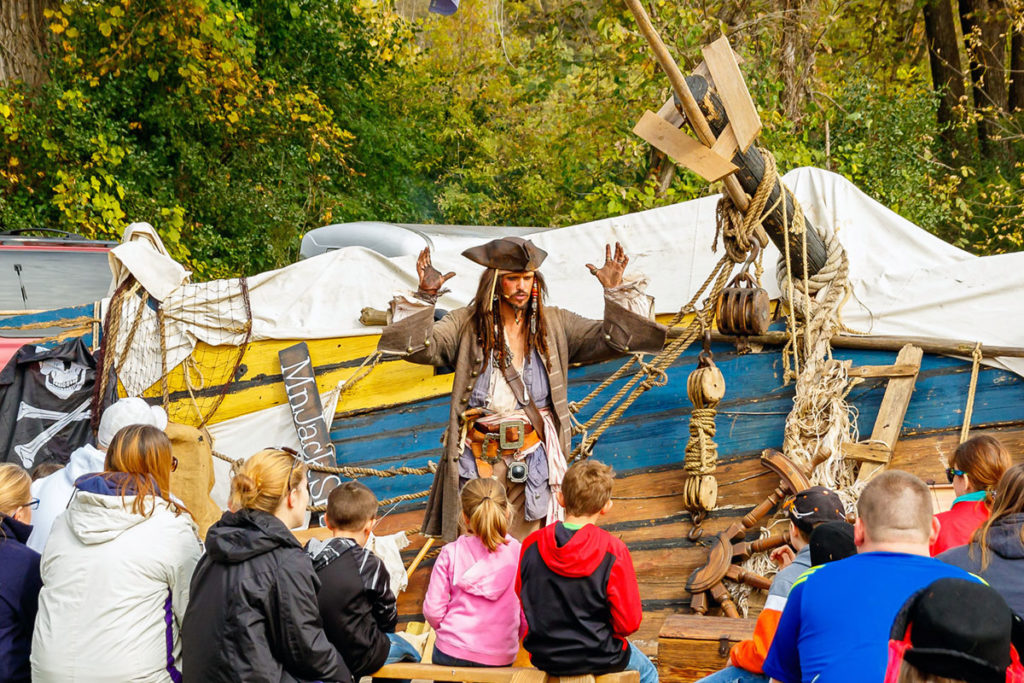
McGowan said, “Many others help, like one of my re-enactors, Bryce Stenzel, who delivers the Gettysburg Address dressed as Abraham Lincoln. Also there’s the re-enactor John Fritsche from New Ulm who does cannon shooting. A lady named Katara portrays a lady blacksmith. I pay many of the reenactors, because for them, it’s their living for the summer.”
McGowan continued, “On site permanently is a flour mill, which take eight children to turn. Then the flour goes to the Hobbit Hut to be made into dough and then to the wood-fired oven. We build a fire in the oven, push it off to one side and put the bread dough next to the fire to bake.
A teaching tool
“Historyfest is a teaching thing,” McGowan said. “Kids come to learn. They don’t know it, but they tell me years later, when they’re in their 20s and 30s, what they learned. Then they’re bringing their own kids.”
Over the years, participation by re-enactors, as well as the audience, grew by word of mouth. The summer budget now is about $20,000, which comes mostly from gate admission of $5 per person for visitors age 12 and up. It’s collected by volunteers from Pioneer Bank who also entertain children as they wait. (An occasional grant augments the budget some years.)
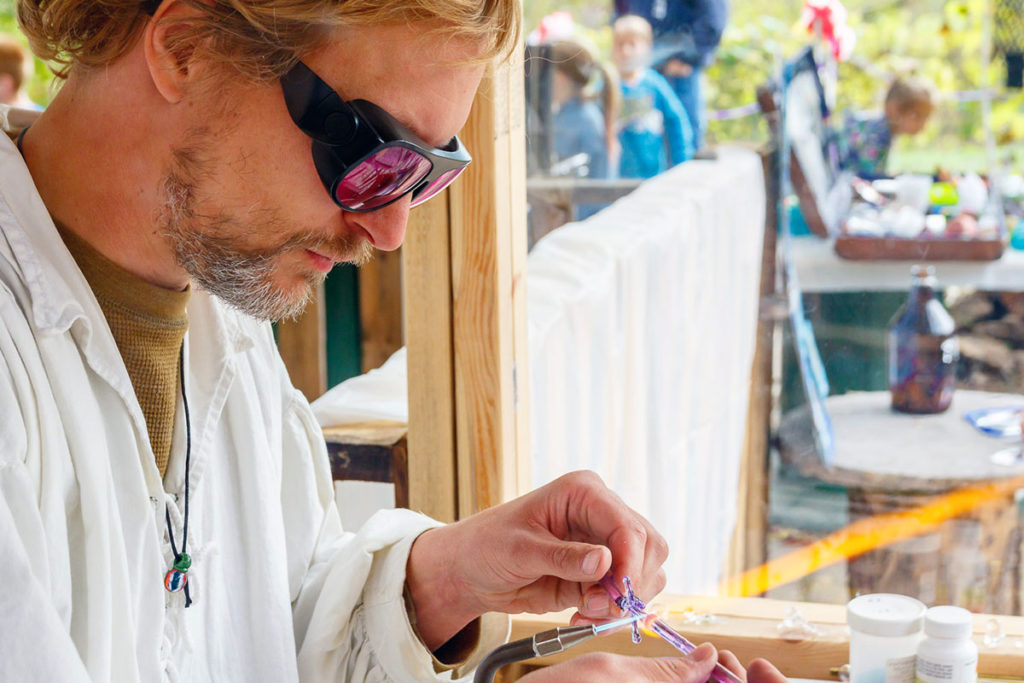
The rest of the year, the site is available for weddings, family reunions or other events, with some weeks hosting five events. There are no set fees; each group makes a donation. Neighbors with young children occasionally stroll over to McGowan’s yard to play in the Troll Tunnel or in the Sandbox of Dragon Tears (filled with flat mancala beads). For older visitors, there’s tomahawk throwing under supervision as well as the opportunity to use a two-man crosscut saw to cut a piece off of a log. The visitor can then brand the wood and take it home.
“We have a pretty complete village out here now,” McGowan said. “We have a bank, a city hall, a jail with an escape hatch for kids, a saloon and a sauna, which is what pioneers used, especially those from Finland. We have a large cabin, a water tower (but no climbing), a garden, a small cabin with two bunk beds that we rent out, hydrants for water and an outhouse, but no regular plumbing. The most serious issue we’ve had has been a broken water line.”
Does McGowan have plans for making any changes? He said, “I’ve got everything pretty much the way I want it. I’m working, though, on getting a gypsy vardo—a gypsy wagon that will be a gypsy stage where we’ll put on a show of some sort. The gypsies lived down in Tincomville, around James Avenue. They marked houses with a code telling who was a good person and who was not,” with messages such as who would feed a person knocking at the door, who had a vicious dog, etc.
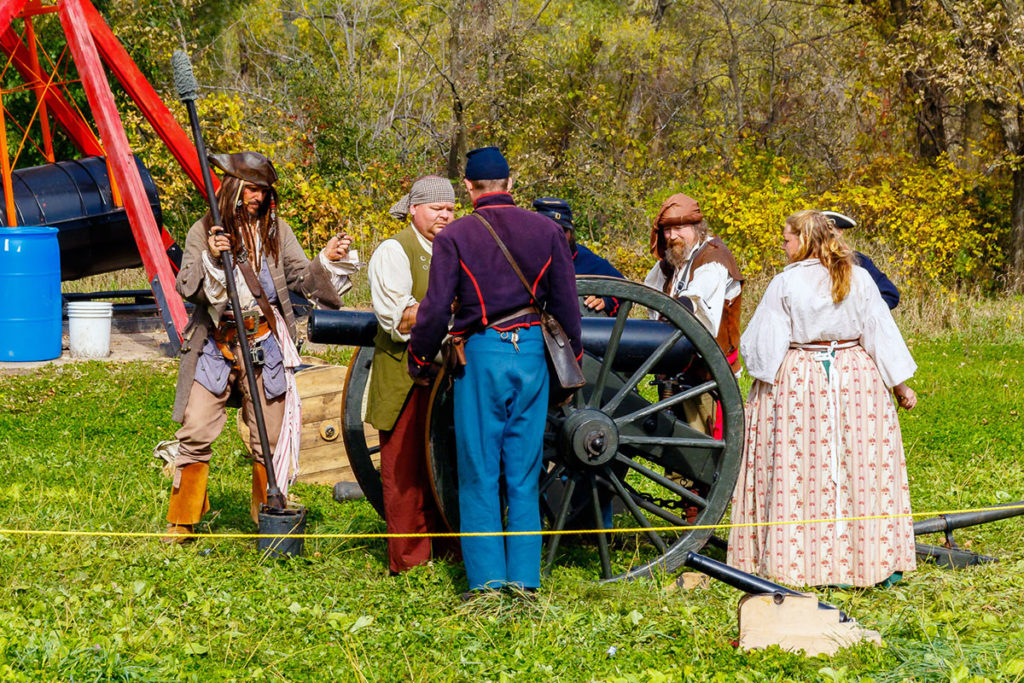
Staying in character
Some volunteers, like Susan Hynes, have been with Historyfest for 10 years. Hynes said, “I represented the Betsy-Tacy Society at first, dressed in period costume from around 1900, and I did hands-on activities with children.”
Then, another volunteer, “Lonesome Ron” Affolter, suggested that Hynes portray a “temperance lady,” an idea she accepted. She dressed in head-to-toe black and carried a hatchet with which to break up saloons. She commented, “Boys liked the hatchet.” She also carried a sign proclaiming “Beware of the Evils of Drink,” which prompted children to ask for an explanation. Another interesting response was from adults who told Hynes how long they had been sober.
“I sang a temperance song,” Hynes said, “which led to a volunteer activity with the Cannon Old West Society, also as a temperance lady.” She now travels in that role throughout southern Minnesota and northern Iowa. Although Hynes is known for creating and wearing elaborate and colorful hats, the Temperance Lady wears a plain, black hat. Hynes said, “I look like an old crow.”
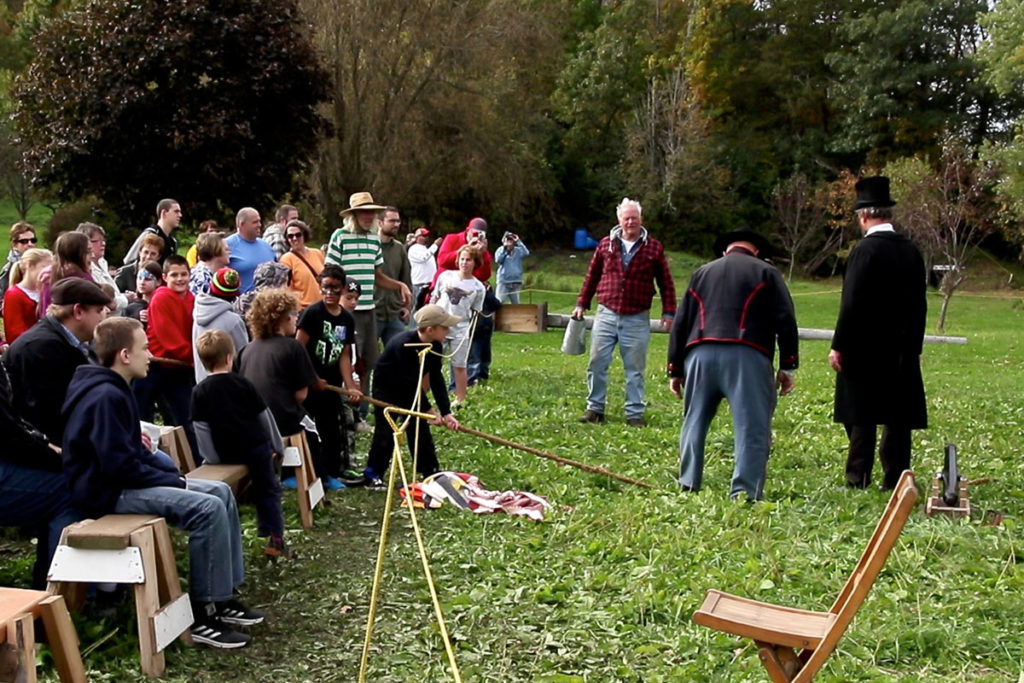
Bryce Stenzel has been involved with Historyfest for a quarter century, always as Abraham Lincoln.
“If it works, why change it?” he said. “It’s what I’m known for, although I have portrayed other historical characters, such as General James Baker and Louis Seppmann, in other reenactments.”
At Historyfest, Stenzel takes part in the morning flag-raising ceremony and then works closely with the New Ulm Battery, portraying Lincoln during their programs and drills, and reviewing the troops. He also has written historical roles for other re-enactors who take part in the New Ulm Battery program.
Stenzel agrees that the activities Historyfest offers are not only fun, but also a memorable learning experience. He said, “As a school teacher, I know that hands-on learning is a great way to get people, especially young people, interested and involved with history.”

